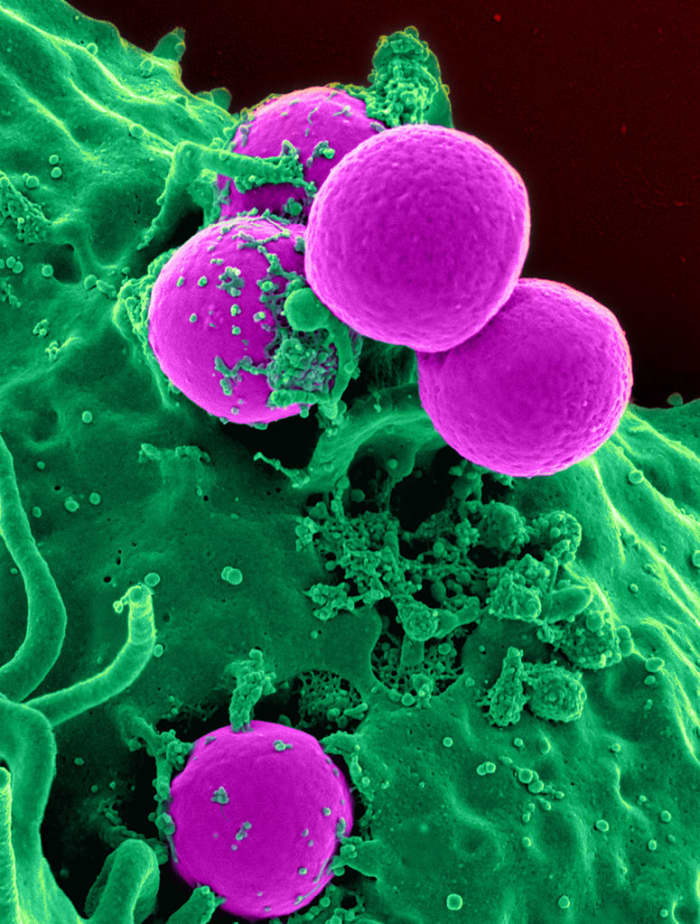Plant Extracts That May Fight Bacteria and Antibiotic Resistance
Plants That Kill Bacteria as Potential Antibiotics
The increasing resistance of disease-causing bacteria to antibiotics is very worrying. Researchers say that it may not be long before people die from previously treatable diseases. Antibiotics are produced by bacteria and fungi or are made synthetically. One potential solution to the problem might be the use of specific chemicals in plants to fight the harmful types of bacteria.
Scientists have made some interesting and perhaps very significant discoveries about the effects of certain plant extracts on dangerous bacteria. In the lab, the extracts either enabled antibiotics to work better or hindered the growth of bacterial populations. The extracts came from cranberries and from three plants that were used to make medicines during the US Civil War.
In this article, I describe:
- Antibiotic resistance
- The plants that provided the helpful extracts
- The harmful bacteria that were tested
- The experiments involving the organisms
Antibiotics Facts and Resistance
Antibiotics are chemicals made by bacteria or fungi to fight other organisms in their environment. Most antibiotics used in medicine come from (or originally came from) microbes. A small number were created in the laboratory instead of originating in living things. The drugs have proved very useful in fighting disease-causing bacteria that are dangerous for us.
The development of resistance to the effects of antibiotics is a natural phenomenon in bacteria. Human actions have made the process worse, however. We use the medications in excessive amounts and in situations where they aren't needed or could be avoided.
Antibiotics are widely used in agriculture to promote animal growth and prevent infections caused by living conditions. They are commonly prescribed for us when we are infected by bacteria. They don't affect viruses and won't do much good in a viral infection unless a person is also infected by harmful bacteria. Some antibiotics reduce inflammation, but other anti-inflammatory medicines exist.
Balancing Concerns and Safety
Despite the worries about excessive antibiotic use and the interesting discoveries described in this article, antibiotics are currently the best treatments that we have for many bacterial infections. If a doctor prescribes an antibiotic for an infection, the patient should follow the medication instructions very carefully. Doses shouldn't be missed, and the medication should be taken for the prescribed time. If a patient has questions about their prescription, they should consult their doctor or pharmacist. Perhaps in the near future, the discoveries described below will lead to additional treatments for disease.
Take Prescribed Medications!
It's important that we take antibiotics when they are prescribed by a doctor and ask the doctor any questions that we have. The medications are often essential and can save lives. Society as a whole is overusing antibiotics, however. The information in this article about the effects of natural extracts is given for general interest and is not a recommendation for use.
Development of Antibiotic Resistance
As in other living things, the bacteria in a species are genetically similar but not identical. Gene variants give them slightly different features. Some bacteria in a group may have a variant or variants that give them resistance to a specific antibiotic. The resistant bacteria survive the antibiotic attack and (if they aren't destroyed in some other way) pass their helpful gene variants to some of their offspring.
As this process repeats from one generation to the next, the bacteria that are susceptible to the antibiotic's effects die, and the resistant bacteria form a greater proportion of the population. Eventually, the population is composed almost entirely of resistant bacteria. This means that an antibiotic that once killed the species (or strain) no longer works. The video below describes the development of antibiotic resistance in bacteria in more detail. The process is sometimes known as multidrug resistance or as antimicrobial resistance.
Cranberries and Urinary Tract Infections
Cranberries are an acidic fruit with a tangy taste. When sweetened and used in a sauce, the red berries are very popular in North America. The sauce is a traditional accompaniment to turkey for a Christmas dinner or a Thanksgiving one. The berries are added to cakes, quick or dessert breads, and pies. Sweetened cranberry juice is popular. The juice can be bought in an unsweetened form as well but is very tart.
Cranberry juice has had a reputation for preventing urinary tract infections (UTIs) for some time. Overall, scientific research into the validity of this idea has produced inconclusive results. It's thought that components of the juice may prevent the attachment of bacteria to the lining of the urinary tract in some people.
Recommended
If you plan to drink cranberry juice regularly in an attempt to prevent a UTI, it might be a good idea to discuss the plan with your doctor. Though the juice is generally safe to drink, it may not be suitable for everyone, as the WebMD link in the "References" section below describes.
3 Harmful Bacteria
Three species of bacteria were used in a cranberry extract experiment at McGill University in Canada. They are all classified as Gram-negative bacteria. These organisms have a more complex cell wall than Gram-positive bacteria. The terms "Gram-negative" and "Gram-positive" refer to the colour changes of the wall in a particular staining technique. The technique was created by a bacteriologist named Hans Christian Gram (1853–1938), which is why a term such as “Gram-negative” is often capitalized.
- Proteus mirabilis can infect the urinary system and cause problems such as kidney stones and urinary tract infections. It's known for its swarming ability, or the ability to move over a surface in a large group.
- Pseudomonas aeruginosa is resistant to multiple drugs and can cause potentially serious infections, including pneumonia. It survives well on moist surfaces such as medical catheters. It can be a special problem for people with cystic fibrosis. In this disorder, mucus becomes thick and sticky. As a result, the substance blocks passageways. The lungs and some other organs may be damaged by this situation.
- Escherichia coli exists in many strains. The members of a bacterial strain have slightly different genetic compositions from other strains in the species. The differences may be significant as far as human health is concerned. Some strains of E. coli are harmless or even beneficial for humans. Others are harmful. Some cause gastrointestinal problems. Other strains cause urinary tract infections.
The Cranberry Extract Experiment
When scientists treat the three bacteria named above with an antibiotic, the microbes gradually develop resistance. When the McGill University researchers treated the bacteria with an antibiotic and the cranberry extract, however, the microbes didn't develop resistance.
The scientists found that the extract increased the antibiotic's ability to fight bacteria in two ways. It caused the cell wall of the bacteria to become more permeable to the antibiotic, enabling a larger quantity of the drug to enter the microbes. At the same time, the bacteria had a harder time pumping the antibiotic out of the cell when the extract was present. The efflux pump in bacteria transports specific substances through the cell wall to the outside. The process is one way in which the microbes prevent antibiotics from hurting them.
The Keeler Oak
The tree shown in the photo above is known as the Keeler Oak and is a type of white oak tree. It's located in New Jersey and is thought to have been planted around 1650. Extracts from the white oak, the tulip tree, and the devil's walking stick have been tested for their effects on bacteria.
White Oak
The white oak (Quercus alba) has a wide distribution in North America. It's found mainly in the eastern and central part of the United States. Its northern distribution reaches southern Ontario in Canada. In the south, it reaches the northern tip of Florida.
The tree can live for several hundred years and is sometimes an impressive sight in its mature form. According to the Missouri Botanical Garden, it can be as tall as eighty feet in cultivation and up to a hundred feet tall in the wild.





